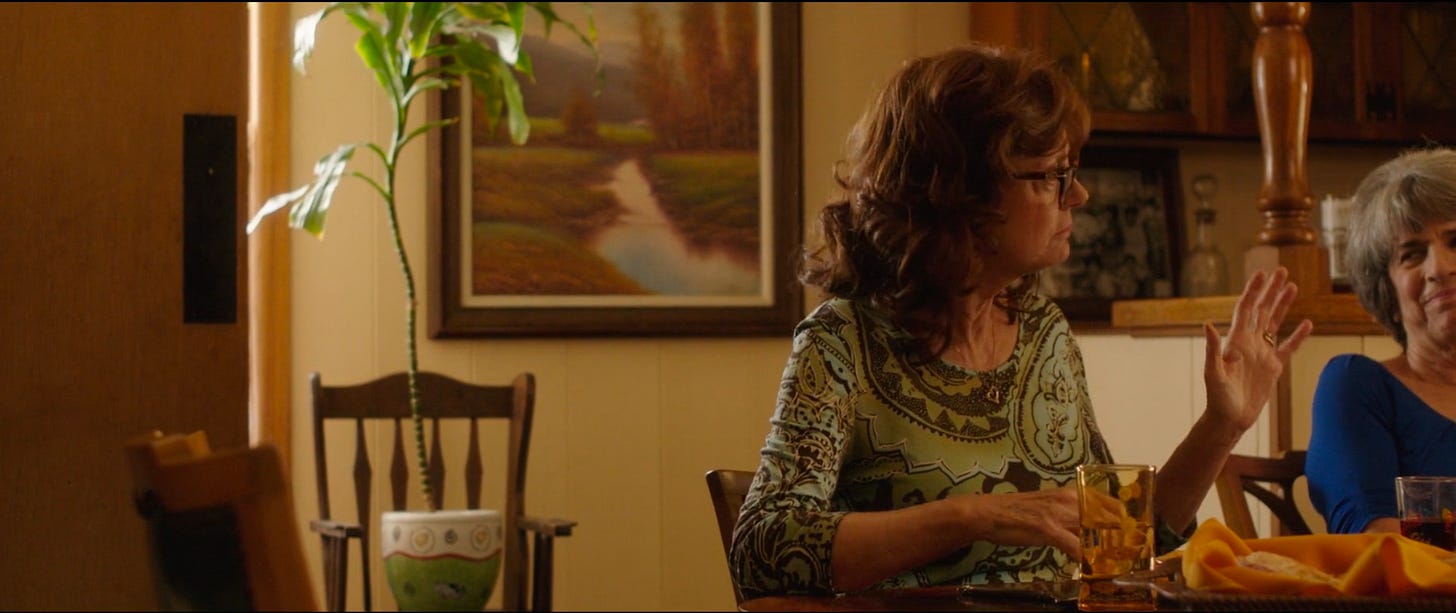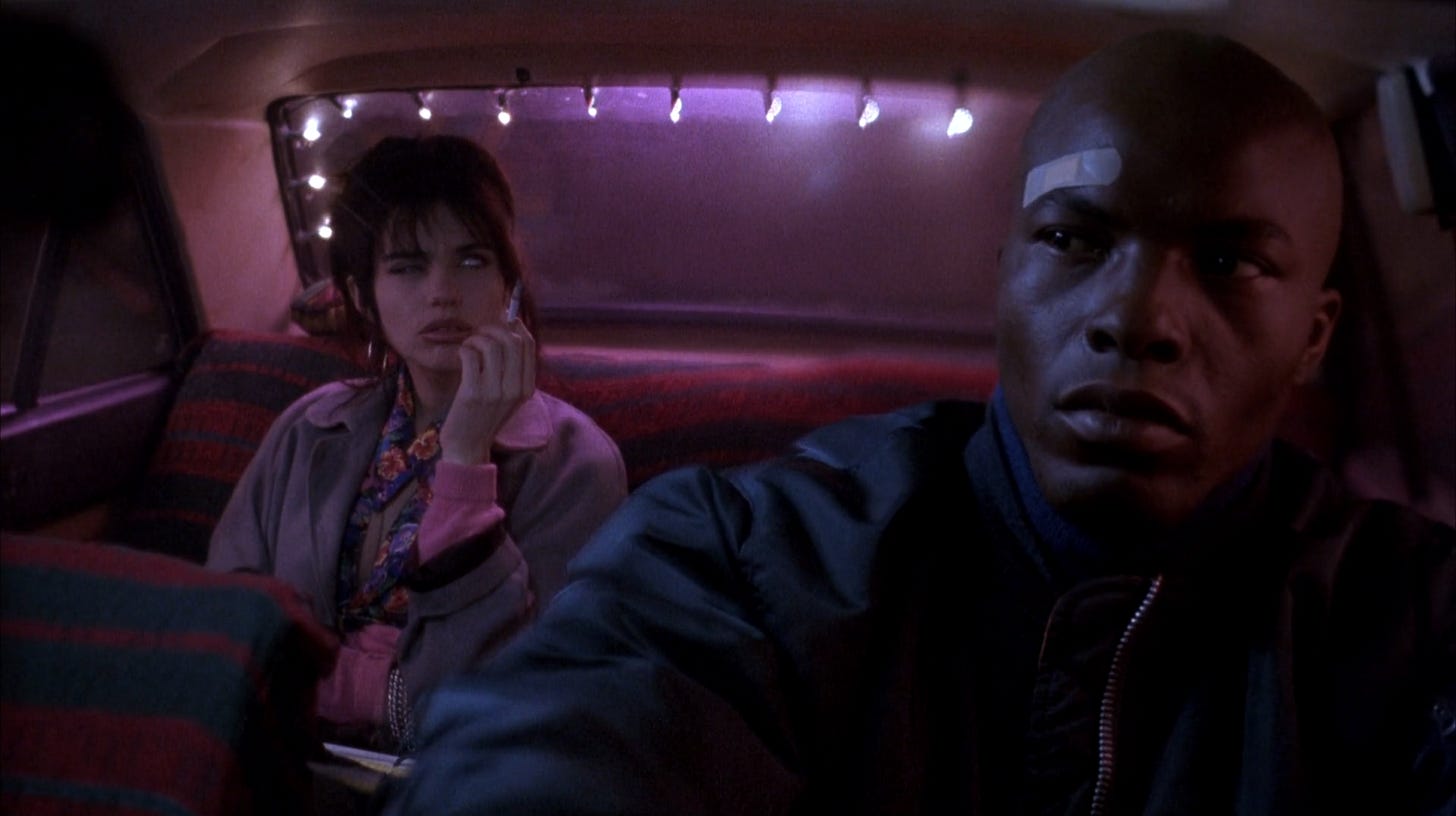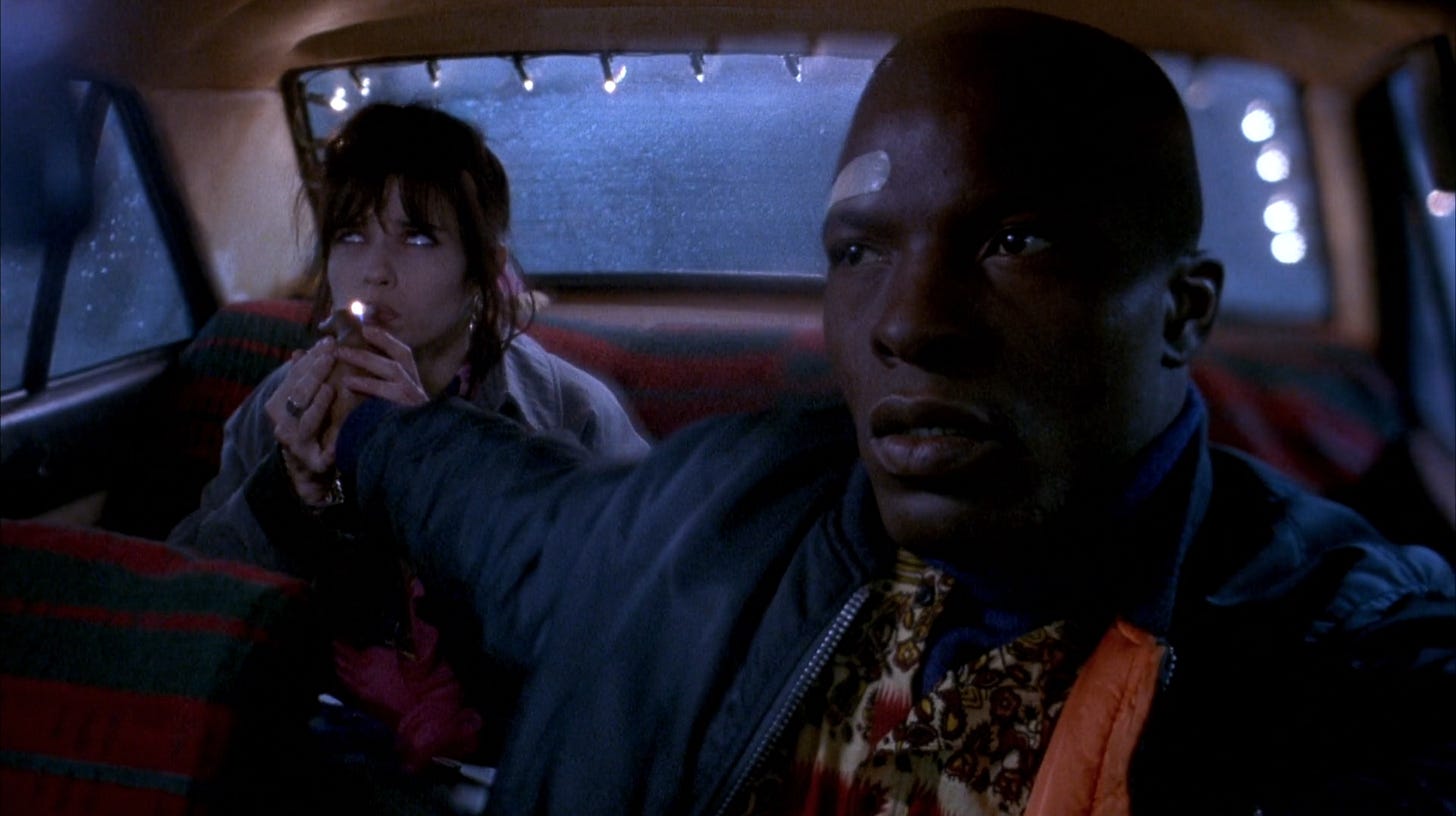Week 90 posts include shots from Titus (1999); The Meddler (2015); Rye Lane (2023); Night on Earth (1991); and The Women (1939).
The Meddler
At first glance this shot from The Meddler feels all wrong; Marne (Susan Sarandon) is offcentre and looking offscreen to a table full of friends, only one of whom we can see cut off on far Frame Right.
But writer/director Lorene Scafaria knows what she's doing, and returns to this frame until we realise what's happening; the empty space where a plant and backgrounded chair occupy is where Marne's husband — who she is still deeply grieving after his death two years ago — would be.
The framing feels 'wrong' and empty because Marne still feels wrong; Scafaria intentionally, repeatedly breaks typical cinematic language to evoke a specific feeling in the audience.
The Women
Over 80 years ago, The Women made innovative use of Technicolor in this remarkably staged sequence.
Next month here on Substack we'll deep dive into at how the whole fashion show (over four minutes long with 'intermission') plays with planes and camera moves, but for now feast your eyes on this glorious transition into colour!
Rye Lane
Among its fish-eyes and split diopters and sumptuous colours, Rye Lane also has fun with framing — these are just a few of the 'halos' it gives Dom and Yas!
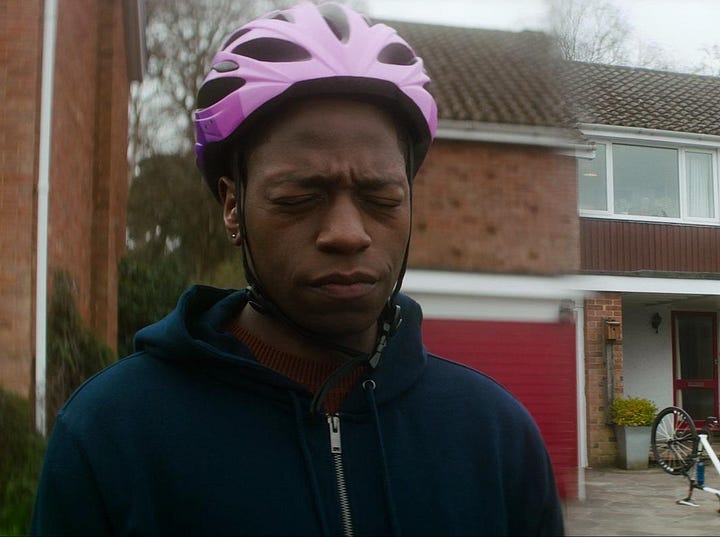
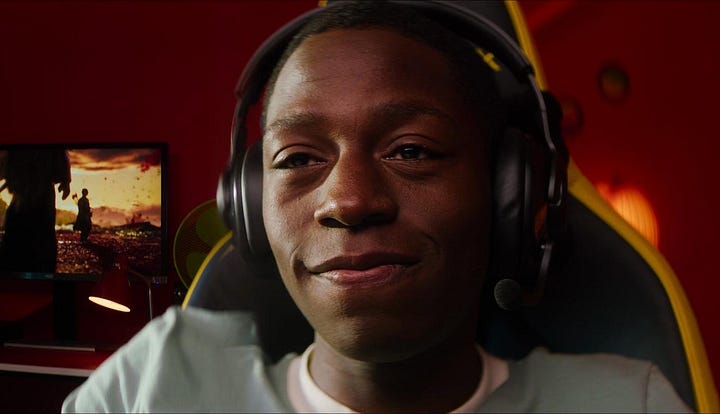
Titus
This shot from Julie Taymor's Titus has a deep depth of field* which drives home the blocking —
— though Titus (Anthony Hopkins) is small in frame and far behind Tamora (Jessica Lange) whose back is to him, their eyelines are to each other, giving the impression she 'sees' him staring intently at her.
*could be a split diopter, but to my eye no split + background on Lange's side in focus
Night on Earth
When Jim Jarmusch chooses to use a split diopter versus when he doesn't holds a lot of meaning in Night on Earth.
Most of the two-shot in 'Los Angeles' where Corky (Winona Ryder) drives Victoria (Gena Rowlands) is in a split (look at Victoria's dress shoulder) because they're really trying to understand each other, and we're meant to be able to ‘read ‘both of them.
In 'Paris' the first two-shot is NOT a split, because the two passengers are actively ignoring and then dehumanising their Unnamed Driver (Isaach De Bankolé).
After he kicks them out and picks up a new fare, then the two-shot is split . . .
because even though the new passenger (Béatrice Dalle) is antagonistic, she and the driver are connecting, and we see how both of them are not speaking 'at' or 'about' each other as the Driver's first fare was, but *to* each other.



